Sedimentary Rock
Sedimentary Rock covers 75% of the Earth, but makes up only 5% of the crust.
Since sedimentary rock covers so much of the surface of the Earth, most of us will encounter it almost on a daily basis. There was a time when people saw all the various rocks, but they were not interested in how they were made or how old they were. Those that did have an interest in rocks did not always use proper scientific methods to understand them.
The last great teacher of the old fashion geology was Abraham Werner. Werner believed that physical features such as mountains and valley were formed by sudden spectacular events called Catastrophes. During Werner's time, no one tried to explain how land forms came about — except to say that mysterious forces within the Earth produces them.
A few people began to doubt Werner's teachings. One of these was a Scottish physician and farmer by the name of James Hutton. Hutton observed the action of streams that ran through valleys and saw that running water moved dirt and pebbles down stream. He believed rivers cut into the rocks of the hills and made valleys.
Hutton stated, "The Present Is The Key To The Past.""
Observe what geologic processes are happening today: they are the same ones that occurred in past years. This is known as the Principle of Uniformitarianism.
There are 3 sources of Sedimentary Rocks
- Clastics: made up of fragments from other rocks.
- Chemical: grains formed from evaporation, precipitation. or a chemical reaction.
- Organic: formed from the remains of plants and animals.
Clastics
Clastic grains are broken off other rocks and then transported to a new environment. The transporting agent can be:
- Wind
- Water
- Gravity
I think that we all have seen wind blowing dust or a muddy stream or river. Fragments of rock are being transported. If the water is flowing fast enough, larger fragments like sand and gravel are transported. In a desert we have large sand storms transporting the fragments of rock. But some of us might not be sure how gravity transports rock. You might see a landslide along a highway or a large rock coming down the side of a hill or mountain. What made them come down -- gravity.
Most of the rocks that are transported are not large rocks but smaller fragments that broke off the bigger rocks. How did the fragments break off the larger rock?
We will look at the factors that determine how these fragments are made.
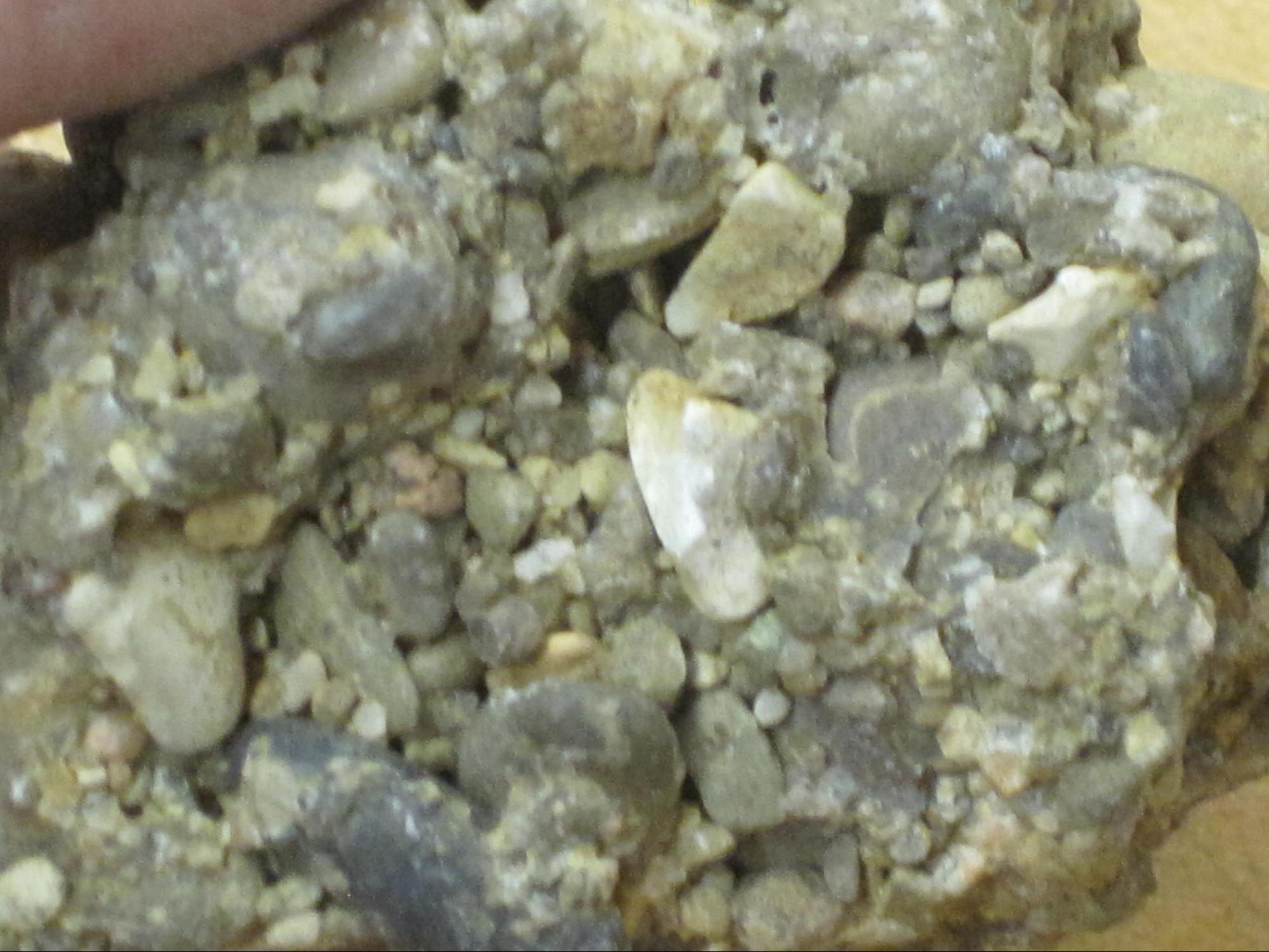
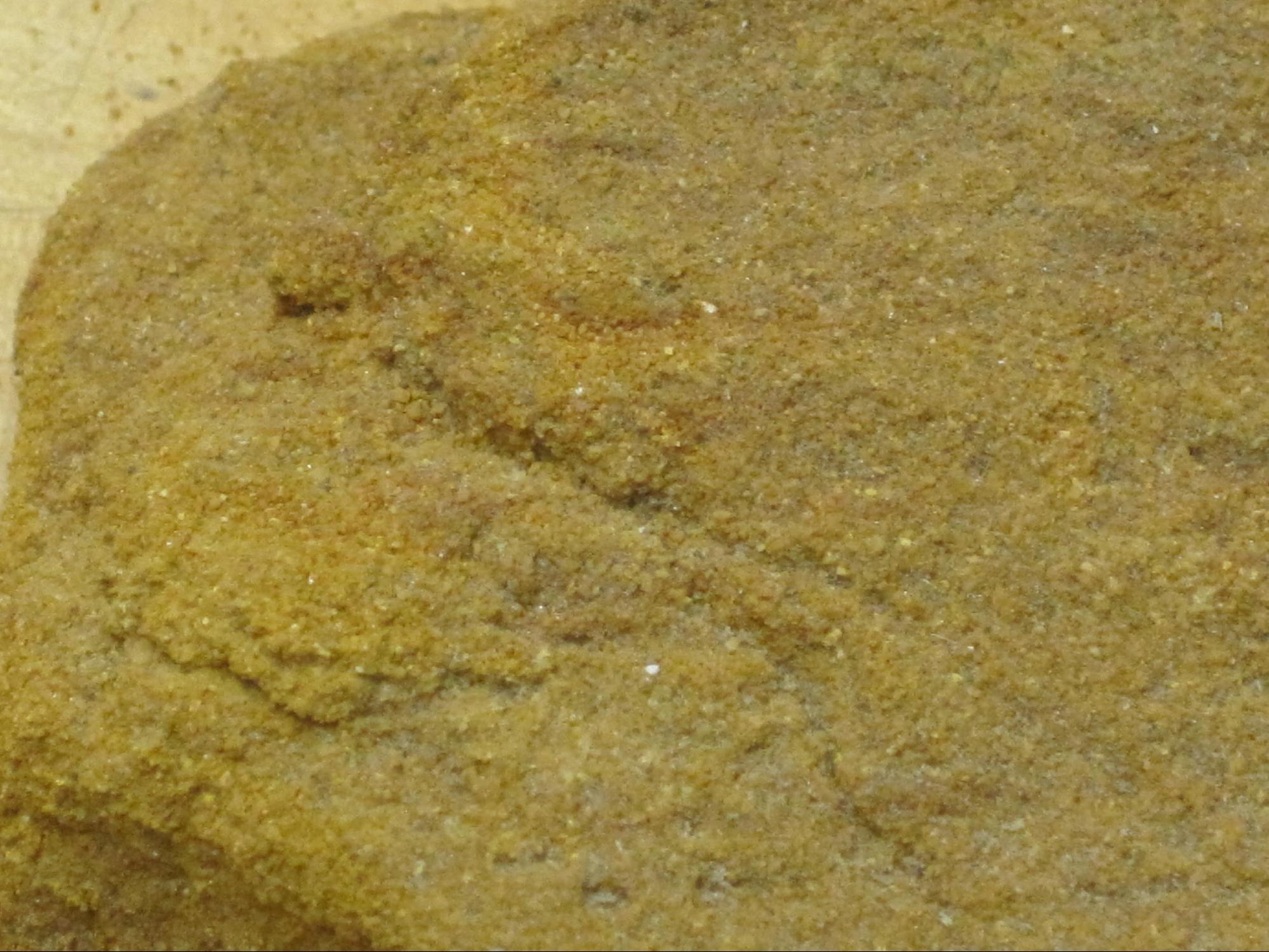
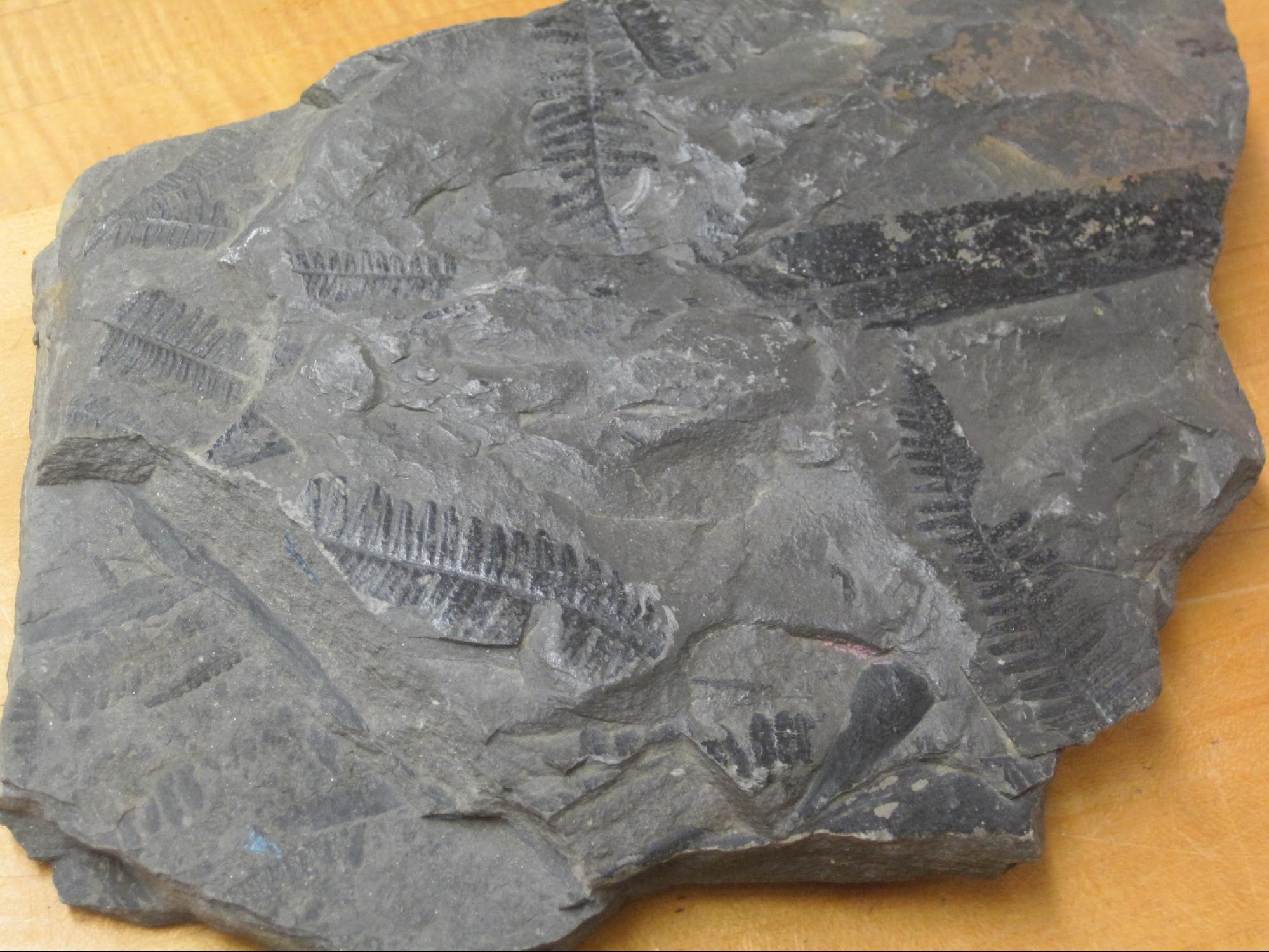
Factors that determine how fast rocks weather:
- Kind of Rock
- Climate
- Cracks in the rock
The rocks that make fragments are the rocks that are exposed to weather. Some rocks can withstand the weather better than others. So we must consider the rock type. Granite for example is extremely hard. You can beat on it with a hammer and find it difficult to break off a piece. But on the other hand, doing the same thing to sandstone will give you lots of little pieces. This is why we use granite for tombstones -- it does not weather fast.
The fragments are held together by a cementing agent. This cementing agent is usually the mineral quartz or calcite. Calcite is easily dissolved by acid. In nature it is a mild acid called carbonic acid (rain).
Climate has a lot to do with how fast a rock weathers. If the weather conditions don't change, the rock is less likely to weather fast. If the climate is rainy, rocks will weather faster. If the climate is season, weathering is also faster.
Cracks in rocks permit water to get into the rock. If the temperature goes down to freezing at night, the water will freeze. Freezing water expands. This is like driving a wedge into the rock. If this happens night after night, the rock will break. This is how potholes in the roads are made.
Non-Clastics
Nonclastics are formed by chemical and organic processes.
Evaporates are formed by the evaporation of water
Example: halite (salt), gypsum (the white stuff in drywall)
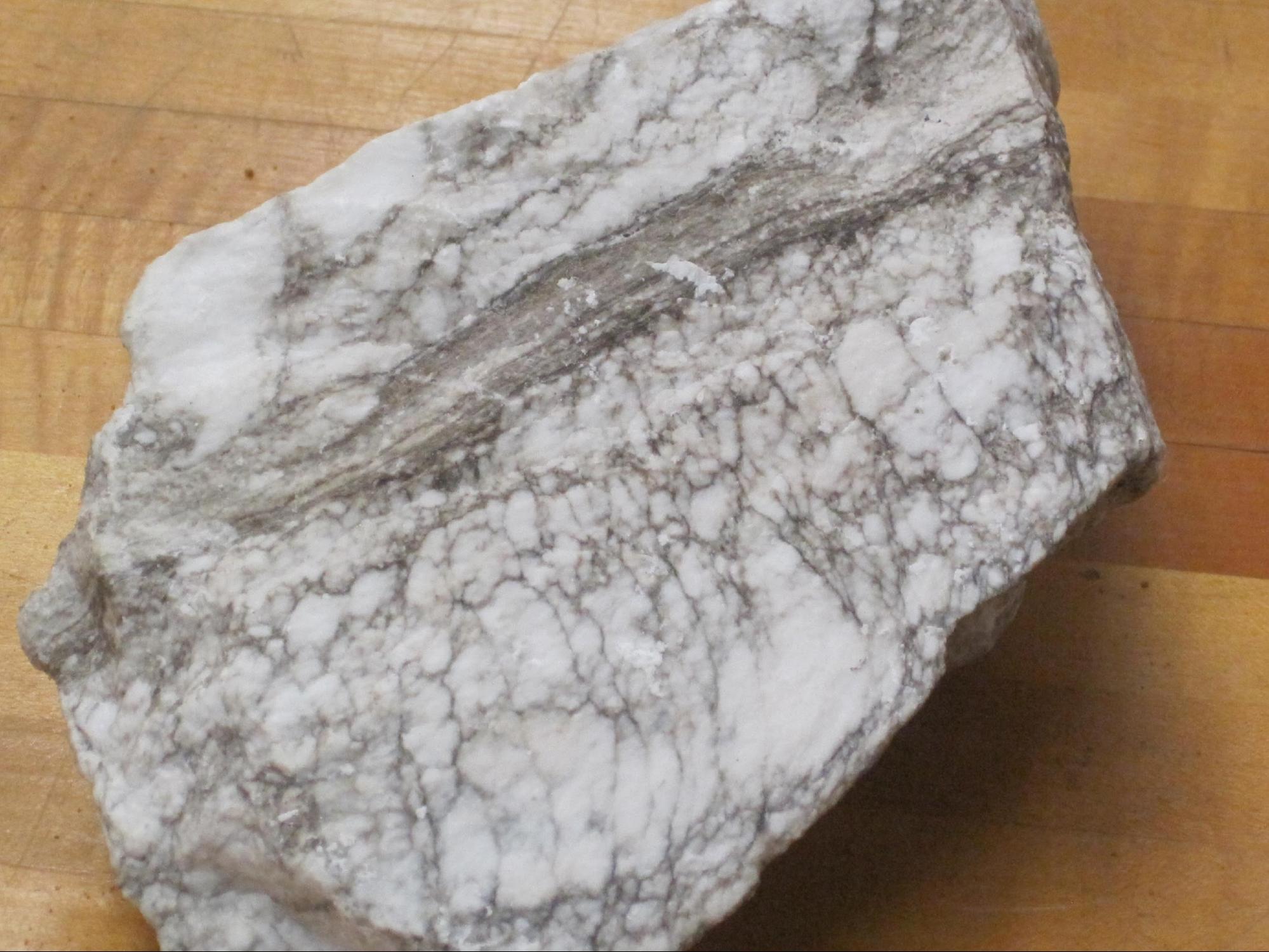
Under lake Erie there is a hugh deposit of salt from a previous lake that evaporated.
Rocks will decompose; this happens mostly in tropical areas
Rain + CO₂ → Carbonic Acid (H₂O₃)
When rain mixes with carbon dioxide in the atmosphere, it makes a weak acid called carbonic acid. All rain is a mild acid. This should not be confused with what we call Acid Rain (which is a stronger acid).
Carbonic acid will decay rocks: Granite changes to Clay
Limestone is mainly composed of the dead remains of sea creatures. The bones of fish and shells from mollusks are the main ingredients.
Coal
Peat → Lignite → Bituminous Coal → Anthracite Coal
Coal starts out as trees and ferns in swamps. When they die, they are covered by water. They don't decay the normal way. No insects to help out. As more and more pile up the material is compressed. The material is all organic. Made up of carbon, hydrogen and oxygen. The first step in the formation of coal is Peat. When this is compressed more it forms Lignite. This material is now mainly carbon and hydrogen. It will burn but does not produce must heat. Under further pressure the Lignite is Changed to Bituminous coal. This is the first true coal. It burns much better than pollutant. When the sulfur combines with rain water it forms sulfuric acid. This is what we call Acid Rain. If the bituminous coal undergoes more pressure and is baked from the heat from magma, it changes into Anthracite Coal. This is a clean burning coal with lots of heat and very little air pollution. It is found in mountainous regions.
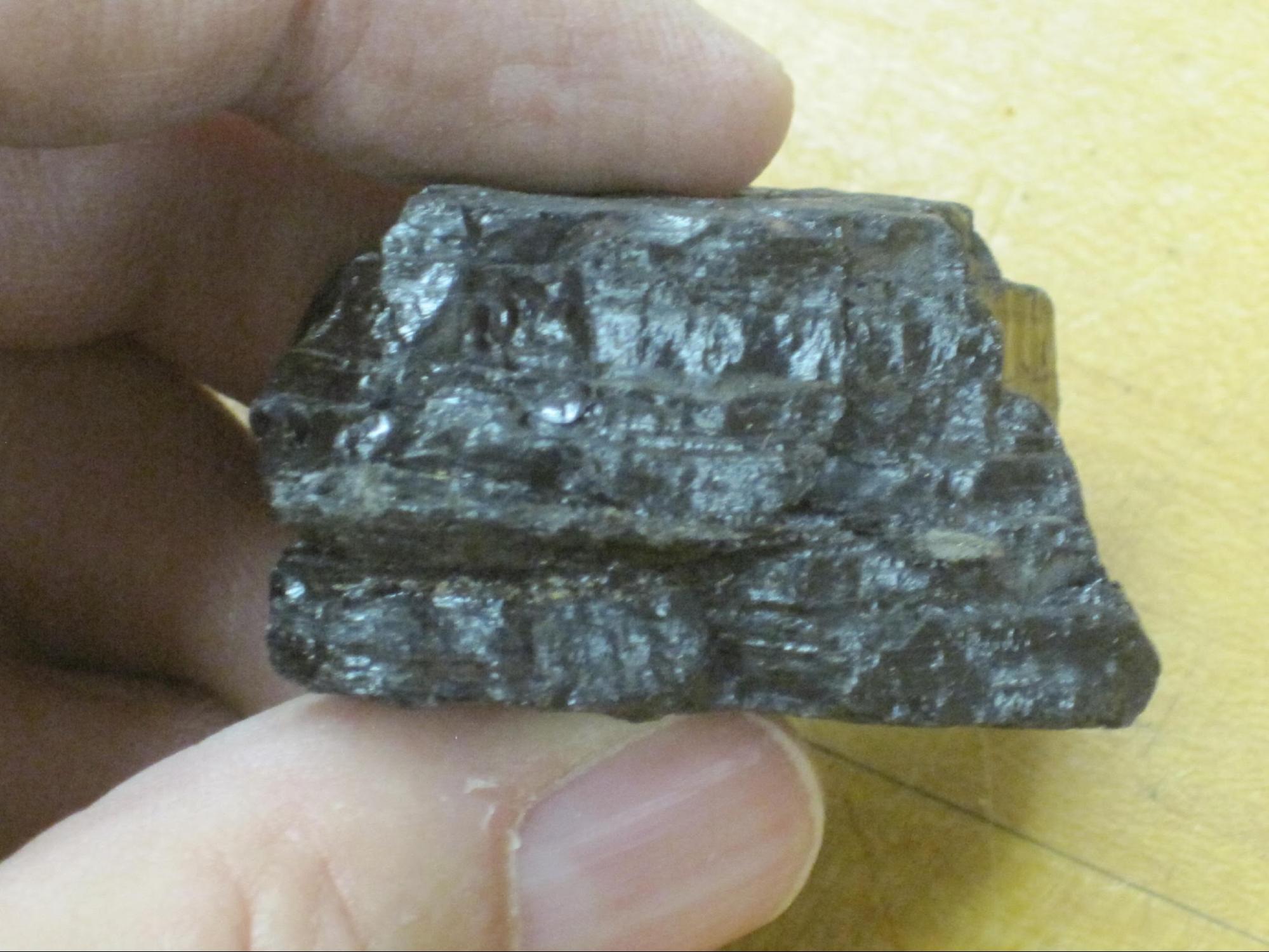
Special Sedimentary Features
Strata: This what each different layer of rock is called.
Bedding Planes: the division which separates the individual layers (strata)
Ripple Marks: Found in bedding planes; marks left in the sand or mud by wind or water (waves).
Geodes: Round cavities lined with crystals of quartz or calcite.
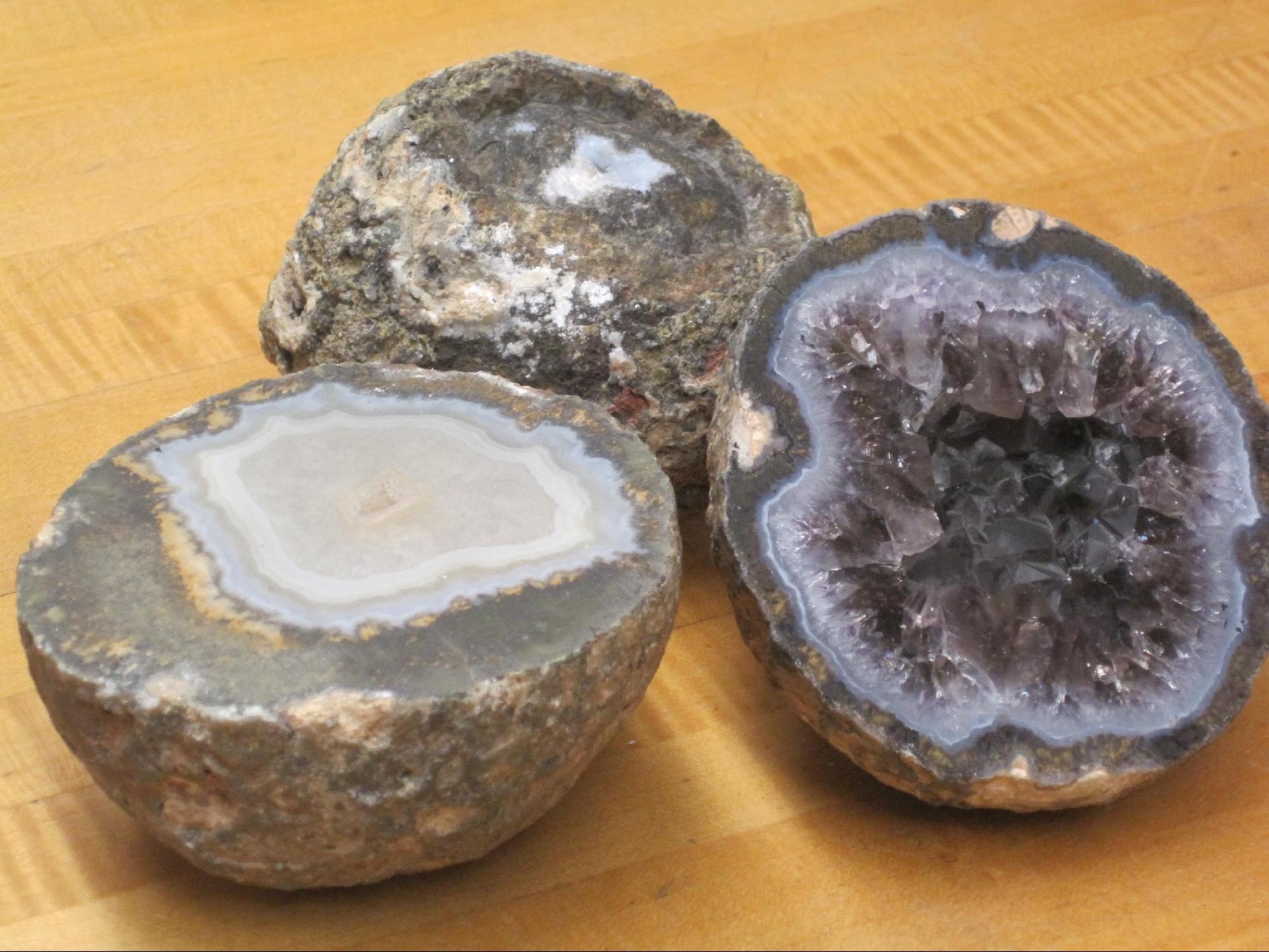
Fossils: any record of past life; most abundant in limestone.
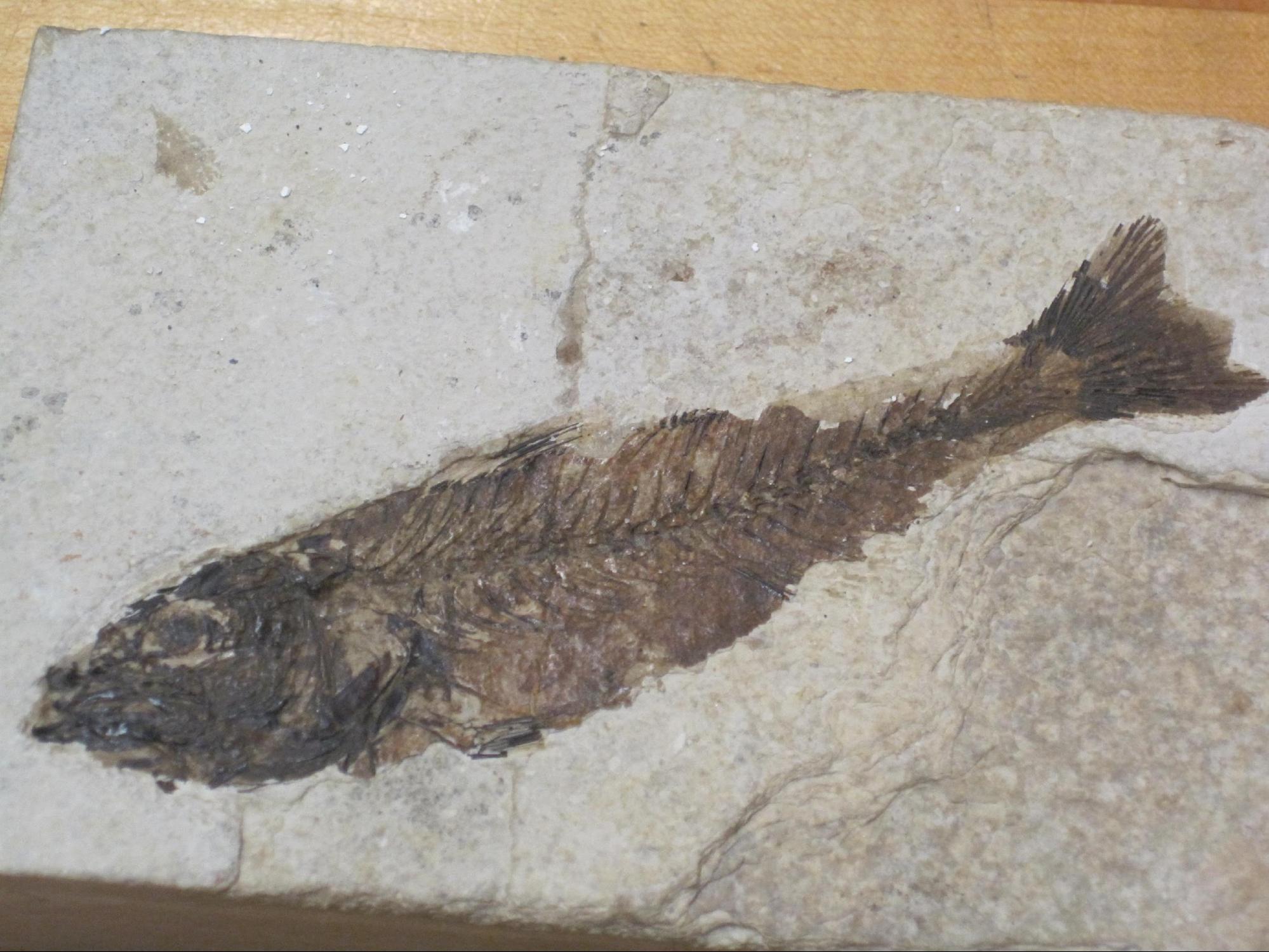
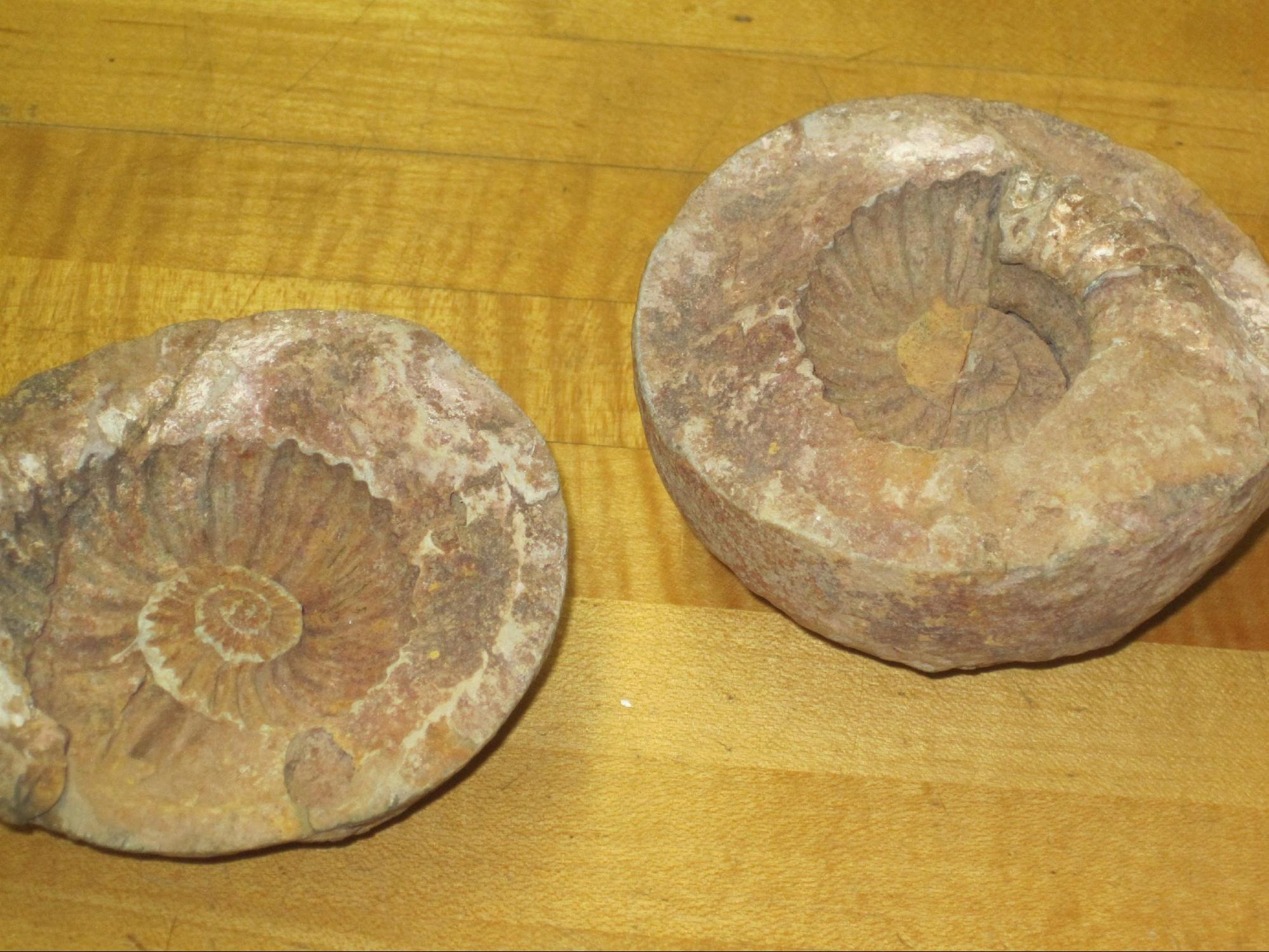
Sorting
Sorting is separating. It's like sorting the laundry. Putting different colors into different piles. Flowing water will do the same thing. When the water is flowing fast, it carries all sizes of rock fragments. But when the water slows, it can not carry the heavier rocks. So they are dropped or deposited. As the water continues to slow, more and more rocks are deposited. The smallest material is deposited last. More and more material is deposited. The material piles up. The first material deposited is compressed and eventually turned into rock. the drawing below shows how all this is done.

The grains are deposited based on their size and density.
During burial of the sediment, the loose material is consolidated by pressure and a cementing agent such as Calcite or Quartz. This is called Lithification.
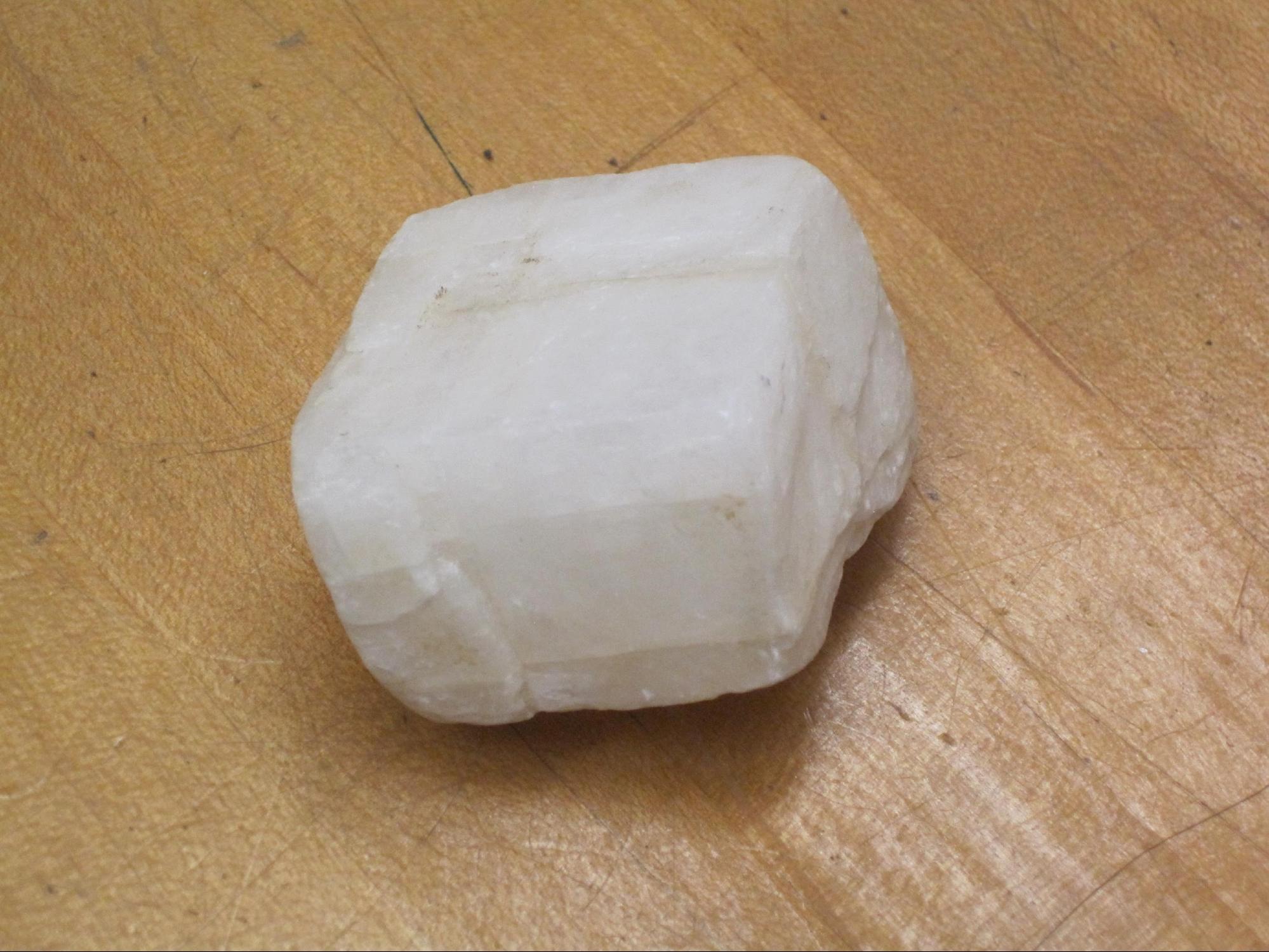
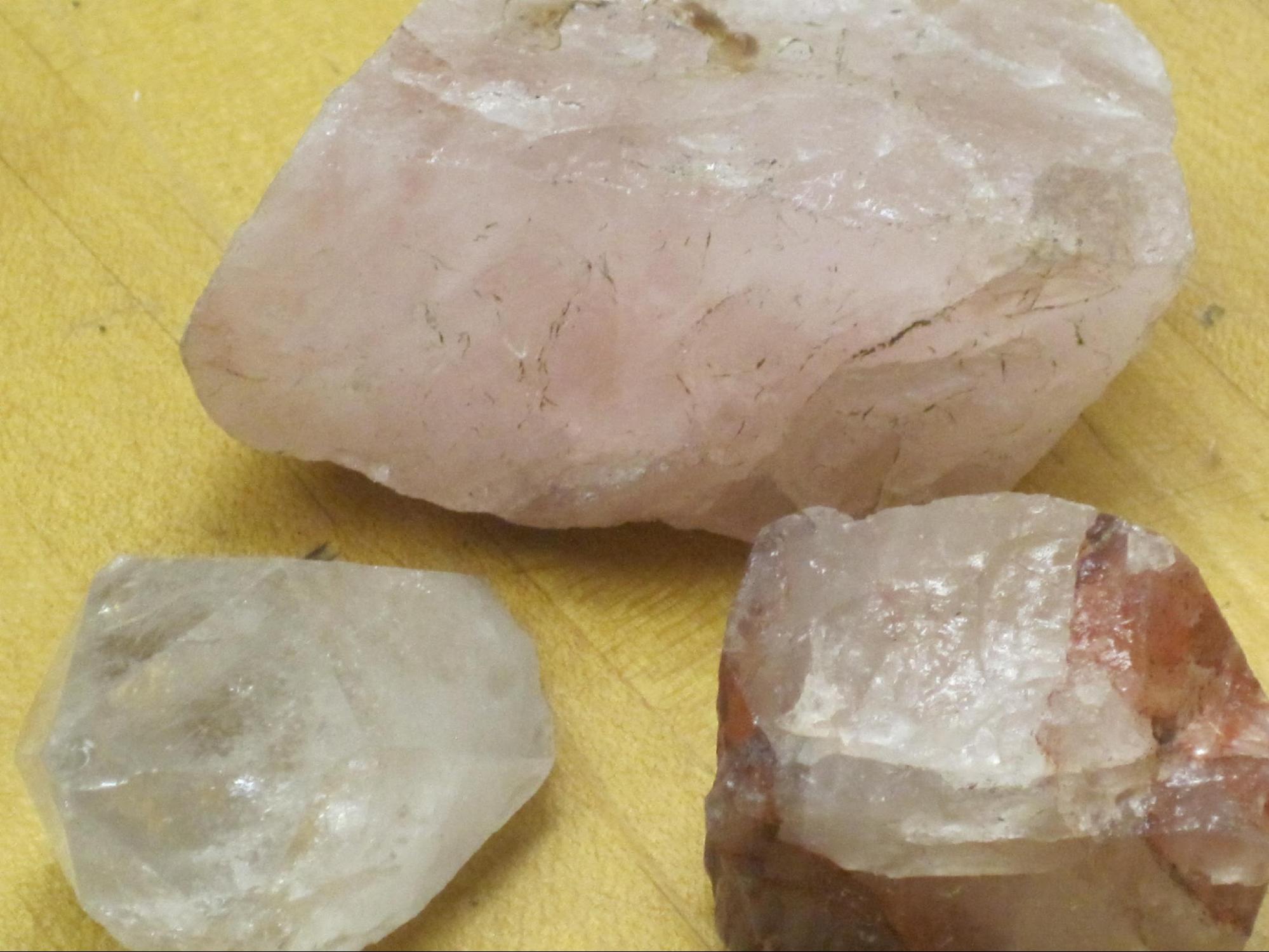
When clastic rocks form there are air spaces between the grains called Pores.

The smaller the grains, the smaller the pores.
Porous rock can contain water. This type of rock is called an Aquifer.
Permeable Rock: water can pass through it.
Impermeable Rock: water can not pass through it.
Artesian wells are wells that are drilled into solid rock. The sandstone (permeable) is sandwiched between two layers of impermeable rock(shale). Water enters the rock from miles away. As the water travels through the rock, it is purified and it is put under pressure. When you drill into the rock, you generally don't need a pump to get the water to the surface. Since the water is under pressure, the pressure forces it to the surface.

Symbols for rocks
When making geologic drawings, we use symbols to indicate the kind of rock that it is.
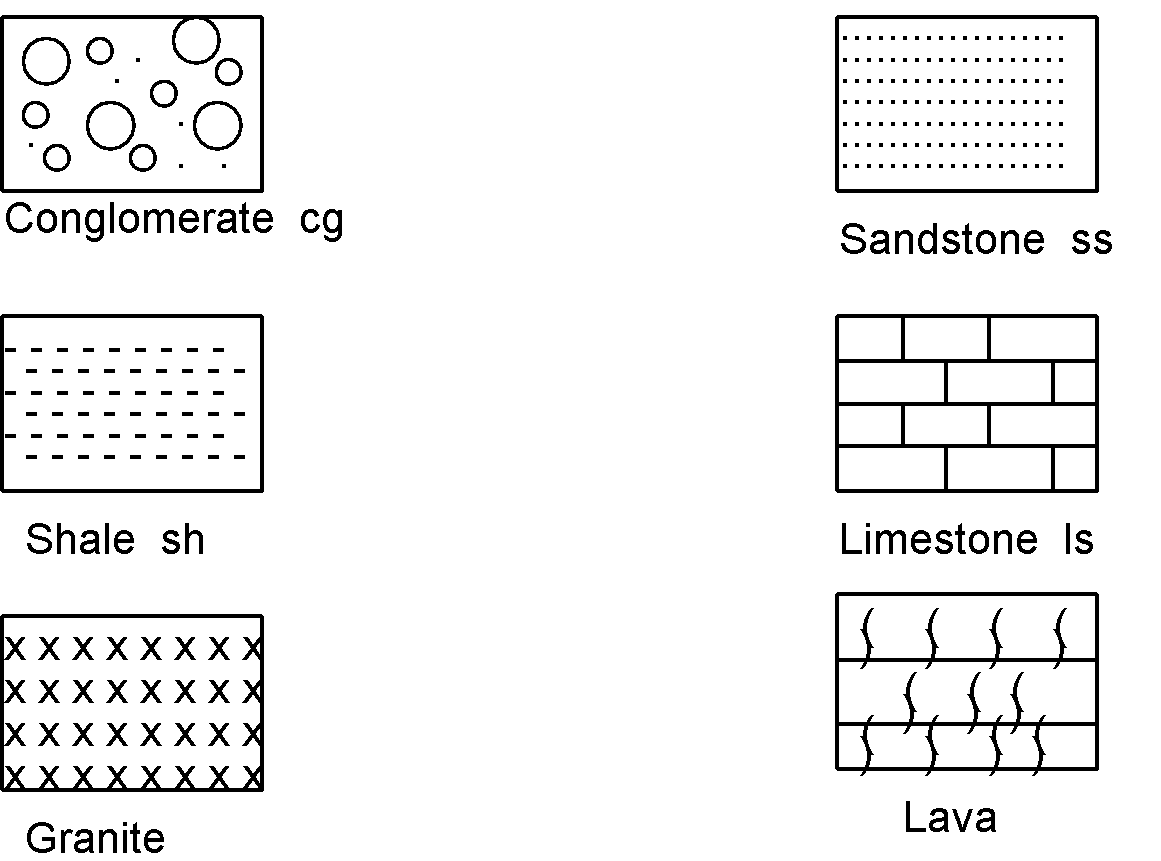
It was mentioned earlier that people that were interested in rocks did not use scientific methods to understand them. For one thing, there weren't scientific principles for use in geology. Listed below are some simple but important principles that have been developed.
Principle of Superposition: the oldest rocks are found in the lowest strata; we number the strata from the oldest to the youngest. The lower the number, the older the rock.

Fossil Correlation: the various strata can be identified by the fossils that they contain.
Rock layers can be hundreds of miles long. If the strata is of the same age, it will have the same type of fossils in it. If a layer of sandstone form from the sand found on a beach, it is not likely to have fossils of clams and camels in the same strata.


Maybe you can see why Fossil Correlation is important. In the drawing above, the rocks have been eroded. The center section has been eroded away. If we try to match the rock strata on the left with the rock strata on the right, do they all match up ? The rock type do but not the fossils. Look at the 3rd layer from the top. They have two different types of fossils. Therefore they are not of the same age. They did not form at the same time.
Caverns

Limestone is a rock type that dissolves easier then most rocks. Rain water is slightly acid(carbonic acid). Dissolving the calcite in the limestone creates air pockets. If the limestone has cracks in it, the water can make its way to great depts. As the water makes it way through the limestone, the carbonic acid slowly dissolves the limestone and carries ions away in solution. After thousands of years, the cracks between beds become so large that they form networks of underground tunnels, sometimes hundreds of miles long
Karst Topography

In limestone regions, most of the water sinks into the ground through cracks and sinkholes. These regions generally have few surface rivers. Lost rivers are formed when surface rivers disappear underground and flow out of caves many miles away. Regions that contain many sinkholes, sinkhole ponds, lost rivers, underground drainage, and natural bridges are said to have Karst Topography. A sinkhole is nothing more than a cavern that has collapsed.
Geyser
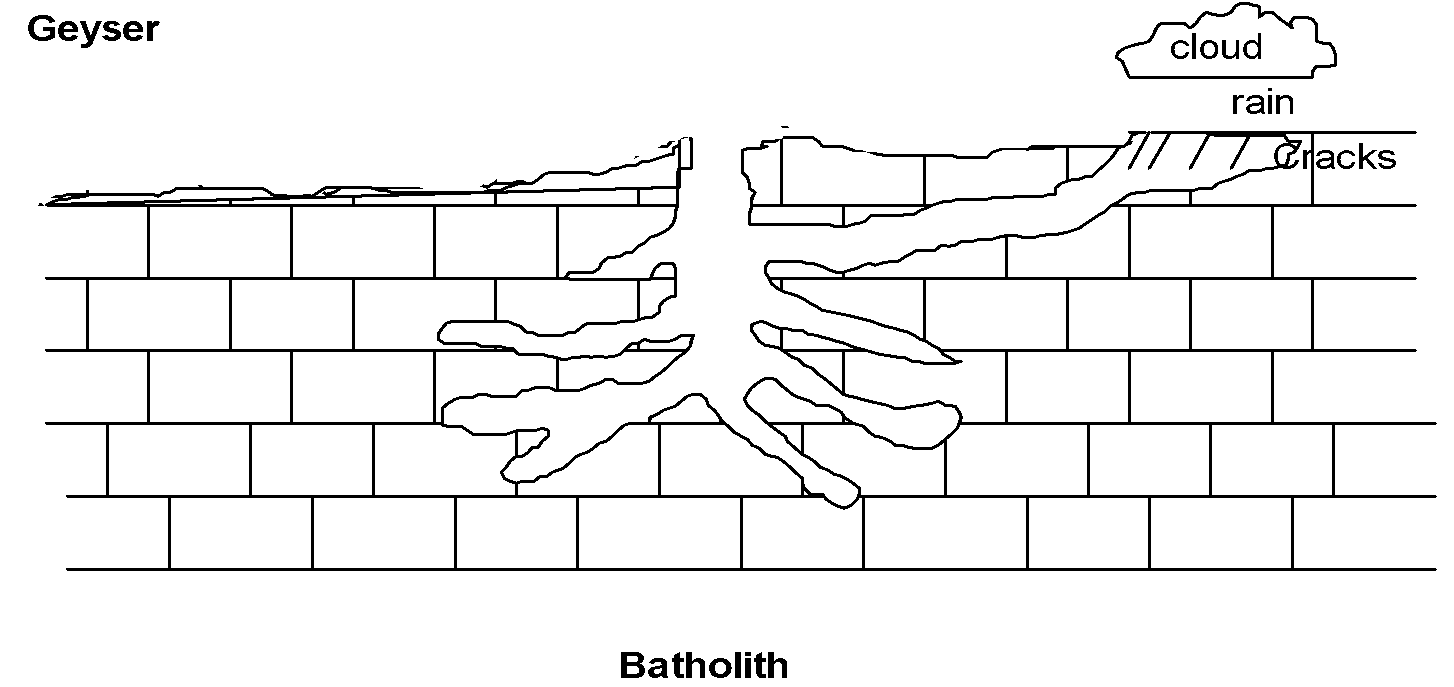
Geysers are boiling hot springs that occasionally erupts. The geyser's tubes have a lot of narrow tubes. They act as though they are blocking the flow of water upward. Because of the constriction, the water at the bottom of a geyser's tube is under pressure. The water becomes superheated to a temperature above the boiling point. But due to the pressure the superheated water can not turn to steam. Finally the water becomes so hot that it overcomes the pressure and turns to steam. When this happens, the steam forces some of the water up to the surface. The pressure at the bottom of the tube is relieved, and the superheated water explodes into steam. The steam blows out the water above it.